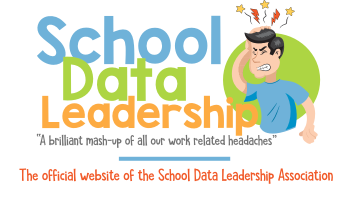Advance support for the academic, linguistic, cultural, social-emotional, behavioral, and physical development of each learner.
Advancing support for the diverse needs of each learner—academic, linguistic, cultural, social-emotional, behavioral, and physical—requires a comprehensive and multifaceted approach by educational leaders. Here’s how to effectively implement such support:
1. Holistic Understanding of Student Needs
Identify diverse needs through comprehensive assessments:
- Use tools like the Multi-Tiered System of Supports (MTSS) framework, which integrates data-driven problem-solving to maximize student achievement and well-being. The MTSS Guide provides insights into its implementation.
- Conduct regular assessments using platforms like Panorama Education to gather data on students’ social-emotional learning, behavior, and academic performance.
2. Tailored Support Systems
Develop targeted support programs:
- Establish language support programs for ESL/ELL learners, utilizing resources such as Colorín Colorado for strategies and teaching aids.
- Create cultural integration initiatives that celebrate diversity and promote inclusivity. Resources like Teaching Tolerance provide curriculum and professional development to foster an inclusive school environment.
- Implement social-emotional learning (SEL) programs using frameworks and resources from organizations like CASEL, which offers research-based strategies and guidelines.
3. Professional Development
Equip educators with the skills to meet diverse needs:
- Provide training on cultural competency and inclusive teaching practices. The Aspen Institute often hosts seminars and resources for promoting education equity.
- Offer workshops on integrating social-emotional learning into daily classroom activities, using resources from CASEL.
- Train staff in identifying and supporting unique behavioral needs, using insights from Positive Behavioral Interventions & Supports (PBIS).
4. Community and Family Engagement
Involve families and community in supporting diverse needs:
- Organize community events that encourage families to share their cultural backgrounds, strengthening community ties and enhancing cultural understanding.
- Develop partnerships with local mental health organizations to support students' emotional and behavioral needs. The Child Mind Institute provides resources for schools.
- Use communication tools like Remind to keep families informed and engaged with their child’s progress and available school resources.
5. Continuous Evaluation and Adaptation
Monitor and adjust programs to ensure effectiveness:
- Use digital tools like Google Forms to regularly gather feedback from students, parents, and teachers about the efficacy of support measures.
- Analyze data from assessments and feedback to adjust programs and support strategies continually.
- Document and share the impact of these initiatives using a platform like ParentSquare which allows for sharing of resources and success stories across the educational community.
Example Implementation
To implement these strategies, an educational leader could start by organizing a needs assessment across the school to identify specific areas where students require more support. Based on the findings, the leader might set up a series of professional development workshops for teachers on cultural competency and SEL integration. Concurrently, a series of parent workshops could be launched to educate families on how they can support their children's diverse needs at home and what resources the school provides. Regular meetings with community stakeholders could further enhance support mechanisms by tapping into external resources and expertise.
By addressing the comprehensive development of each learner, educational leaders can create a nurturing and inclusive environment that respects and promotes all aspects of student growth, preparing them for a well-rounded and successful future.
Academic Development
Academic support goes beyond traditional teaching methods, focusing on engaging and innovative instructional strategies that cater to diverse learning styles. This includes:
- Personalized Learning: Tailoring curriculum to meet the individual strengths and weaknesses of each student.
- Critical Thinking and Problem Solving: Encouraging students to think critically and solve real-world problems enhances cognitive skills.
- Technology Integration: Utilizing educational technology to supplement learning and make complex ideas more accessible.
Linguistic Development
Supporting linguistic development means providing resources that help students enhance their language skills, which is vital for both English native speakers and English Language Learners (ELLs):
- Language Classes: Offering courses in English and other languages to improve proficiency.
- Communication Skills: Teaching effective writing, speaking, and listening skills.
- Cultural Literacy: Integrating cultural context into language learning to increase engagement and understanding.
Cultural Development
Cultural support involves promoting awareness and appreciation of diverse cultures, which enriches the learning environment and fosters inclusivity:
- Multicultural Curriculum: Incorporating studies of various cultures in the curriculum.
- Cultural Exchange Programs: Facilitating interactions with people from different backgrounds through exchange programs.
- Celebration of Cultural Events: Organizing events that celebrate and educate about different cultures.
Social-Emotional Development
Addressing the social-emotional aspects of development is crucial for helping students manage emotions and build healthy relationships:
- Social Skills Training: Programs that teach empathy, cooperation, and conflict resolution.
- Counseling Services: Providing access to counseling to help students cope with emotional challenges.
- Mindfulness and Stress Management: Techniques to help students manage stress and focus on the present moment.
Behavioral Development
Behavioral support aims to guide students in forming positive behaviors and decision-making skills:
- Positive Behavioral Interventions and Supports (PBIS): Implementing frameworks that encourage positive behavior and deter negative actions.
- Behavioral Coaching: One-on-one or group sessions focusing on behavior management strategies.
- Role-Modeling: Encouraging staff and older students to exhibit behaviors that positively influence younger students.
Physical Development
Physical development support ensures students are healthy and active, which significantly impacts their ability to learn:
- Physical Education Classes: Regular, structured physical activity.
- Nutritional Programs: Ensuring access to healthy meals and educating about nutrition.
- Health Screenings and Services: Providing regular health checks and interventions as needed.
Each of these areas is interconnected, and supporting them in an integrated manner can dramatically enhance the educational experience, making it more comprehensive and responsive to every learner’s needs.
